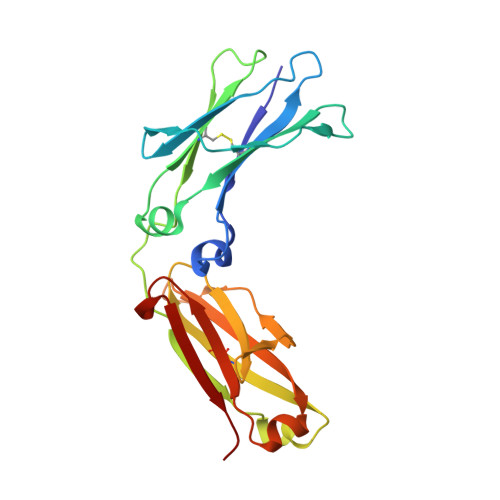Engineering a Monomeric Fc Domain Modality by N-Glycosylation for the Half-life Extension of Biotherapeutics.
Ishino, T., Wang, M., Mosyak, L., Tam, A., Duan, W., Svenson, K., Joyce, A., O'Hara, D.M., Lin, L., Somers, W.S., Kriz, R.(2013) J Biol Chem 288: 16529-16537
- PubMed: 23615911
- DOI: https://doi.org/10.1074/jbc.M113.457689
- Primary Citation of Related Structures:
4J12 - PubMed Abstract:
Human IgG is a bivalent molecule that has two identical Fab domains connected by a dimeric Fc domain. For therapeutic purposes, however, the bivalency of IgG and Fc fusion proteins could cause undesired properties. We therefore engineered the conversion of the natural dimeric Fc domain to a highly soluble monomer by introducing two Asn-linked glycans onto the hydrophobic C(H)3-C(H)3 dimer interface. The monomeric Fc (monoFc) maintained the binding affinity for neonatal Fc receptor (FcRn) in a pH-dependent manner. We solved the crystal structure of monoFc, which explains how the carbohydrates can stabilize the protein surface and provides the rationale for molecular recognition between monoFc and FcRn. The monoFc prolonged the in vivo half-life of an antibody Fab domain, and a tandem repeat of the monoFc further prolonged the half-life. This monoFc modality can be used to improve the pharmacokinetics of monomeric therapeutic proteins with an option to modulate the degree of half-life extension.
Organizational Affiliation:
From Global Biotherapeutics Technologies, Pfizer Inc., Cambridge, Massachusetts 02140. Electronic address: tetsuya.ishino@pfizer.com.
















